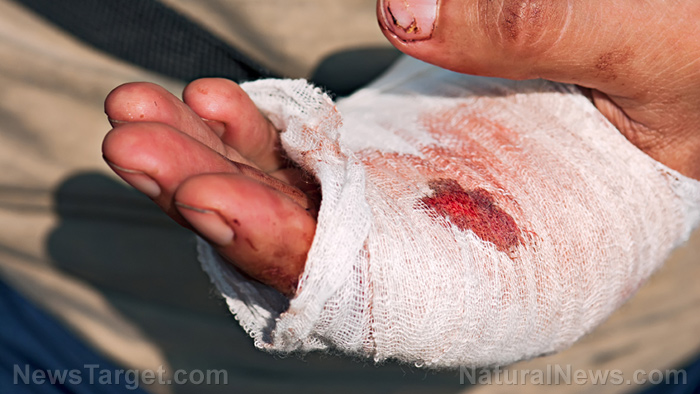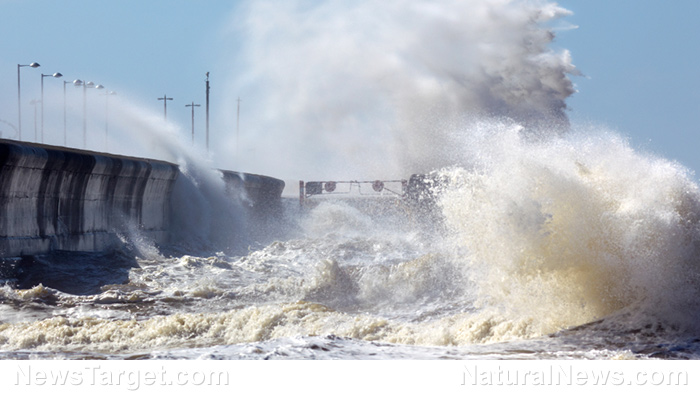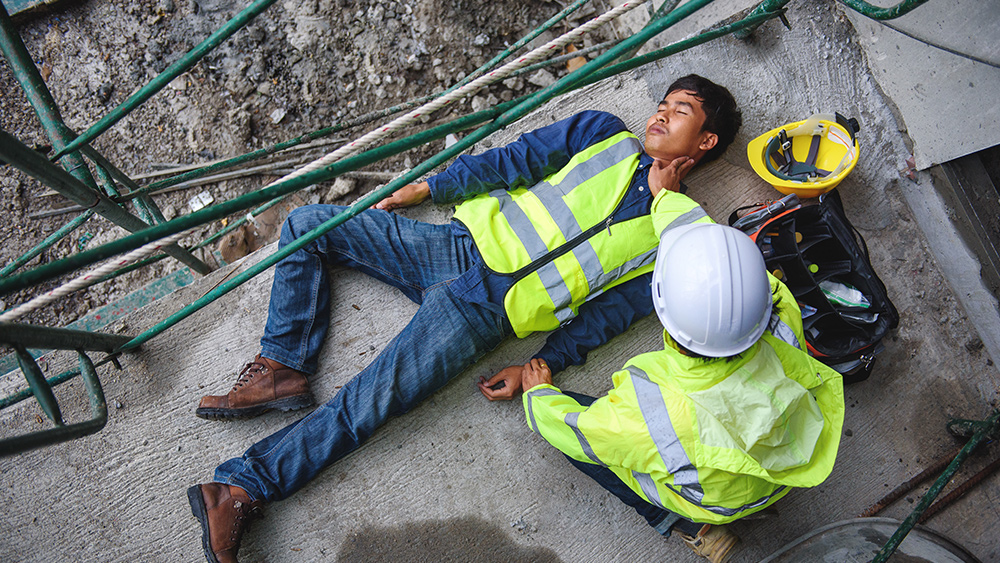Medical preparedness: How to treat minor injuries in the field
11/03/2018 // Zoey Sky // Views
Tags: bug out, emergency medicine, field injuries, first aid, medical emergencies, minor injuries, off grid, outdoors, preparedness, prepper, prepping, SHTF, survival, survivalist, treating injuries

Minor field injuries and how to treat them
Simple injuries include may include:
- Ankle sprains – You can get a sprained ankle when hiking. Sprains occur when your foot turns inward, which may tear or stretch the ligaments near the outer part of the ankle because they're relatively weak. Gently exercise a sprained ankle to avoid losing its flexibility and strength. Exercising the ankle can also help prevent re-injury.
- Cuts – If you accidentally cut yourself outdoors, the wound must be treated right away to avoid infection. First, stop the bleeding then apply ice to prevent the cut from swelling. A minor cut will only require a gauze pad after applying ice, then compress the wound and elevate it. However, a larger cut may require some stitching. If someone has facial lacerations, keep them calm. Place a clean towel over the injury so the victim doesn't go into shock.
- Foot blisters – Foot blisters are usually caused by friction and skin irritation. You can develop blisters if you wear poorly fitting hiking shoes and wet socks. To prevent foot blisters, wear two layers of socks or liner socks. Additionally, you can apply Dr. Scholl's moleskin to the blister-prone area. Treat a blister while you're still in the field so you can continue hiking.
- Hamstring strain – The hamstring, which is made up of muscles at the back of your thigh, can be strained if you overstretch. For example, you can strain your hamstrings by kicking out your legs sharply when running. You can also suffer from a hamstring strain if you fall forward while water skiing. Unlike the other injuries, a hamstring strain may take much longer to heal since constant stress is applied to the injuries whenever you walk. You can have a strained hamstring for as long as six to 12 months, and re-injuries often occur if you are unable to relax. You can shorten the healing period by immediately treating this injury in the field. Use the PRICE principle, which is elaborated below, to treat a strained hamstring.
- Shin splints – You can get shin splints in a rigorous training regime, such as running long distances on a paved road or riding a mountain bike uphill. This kind of injury causes pain near the front of the lower legs. Treat shin splints by applying ice and resting. Shin splints are caused by a small break in the shinbone. However, if the pain persists, seek medical help immediately. (Related: Medical preparedness when SHTF: What you really need to know.)
Treating injuries with the PRICE principle
The PRICE principle is often used to help injured individuals heal faster and to prevent re-injury. Swelling is a normal response to field injuries, but excessive swelling may limit your range of motion and interfere with healing. Consult a medical expert if you notice excessive swelling in the injured area.
Treat a field injury by following the PRICE principle:
- Protect – Make sure the wound has adequate protection to prevent further injury. A severe injury must be protected with a crutch, pad, or splint.
- Restrict – Restrict activity to avoid aggravating the injury and to help it heal quickly.
- Ice – Apply ice to the injured area to prevent further swelling. You can apply ice to an injury for 20 minutes every one or two hours in the first 48 hours after you are injured. Avoid heat during this initial stage because it might encourage inflammation.
- Compress – Compress the injury by using an elastic bandage to help reduce the swelling.
- Elevate – Keep the injured area in an elevated position in relation to the rest of the body, like the heart, to prevent swelling. Elevation will help reduce blood pressure in the injured area. By minimizing swelling, you can also decrease pain in the affected area and limit the loss of range of motion. Elevation may also hasten your recovery time.
You can learn more about medical preparedness and how to treat minor injuries when SHTF at Preparedness.news.
Sources include:
Related Topics
bug out emergency medicine field injuries first aid medical emergencies minor injuries off grid outdoors preparedness prepper prepping SHTF survival survivalist treating injuriesLatest News
Related News
08/24/2023 / By Zoey Sky
08/22/2023 / By Olivia Cook
08/10/2023 / By Olivia Cook
08/09/2023 / By Olivia Cook
07/27/2023 / By Olivia Cook
07/25/2023 / By Zoey Sky
Take Action:
Support Natural News by linking to this article from your website.
Permalink to this article:
Copy
Embed article link:
Copy
Reprinting this article:
Non-commercial use is permitted with credit to NaturalNews.com (including a clickable link).
Please contact us for more information.
Please contact us for more information.























